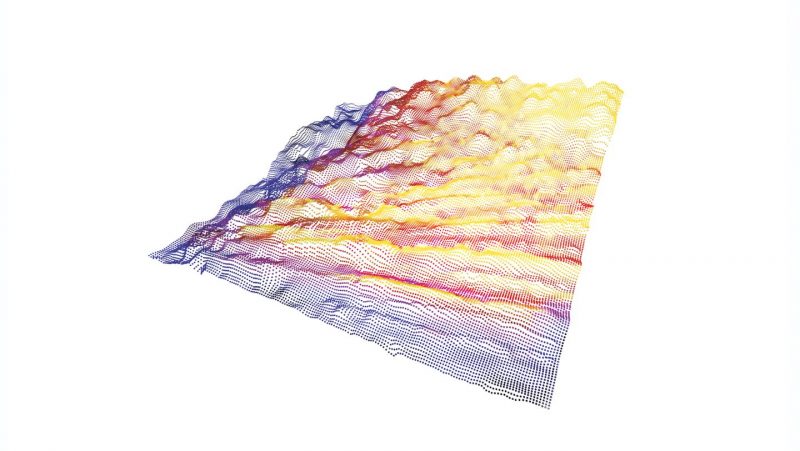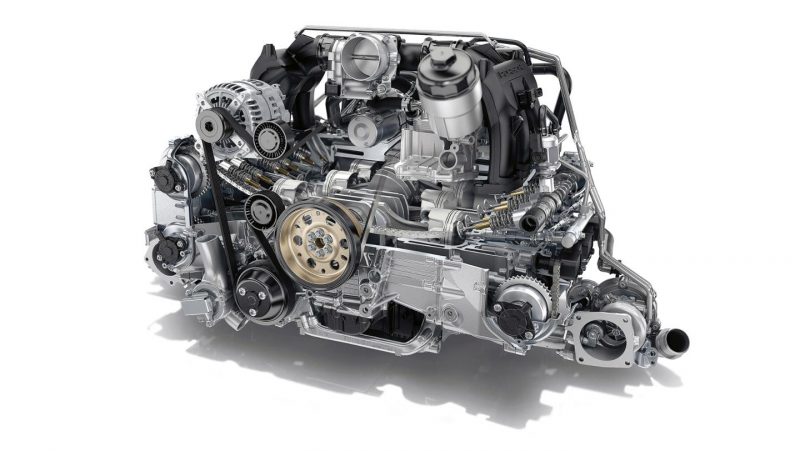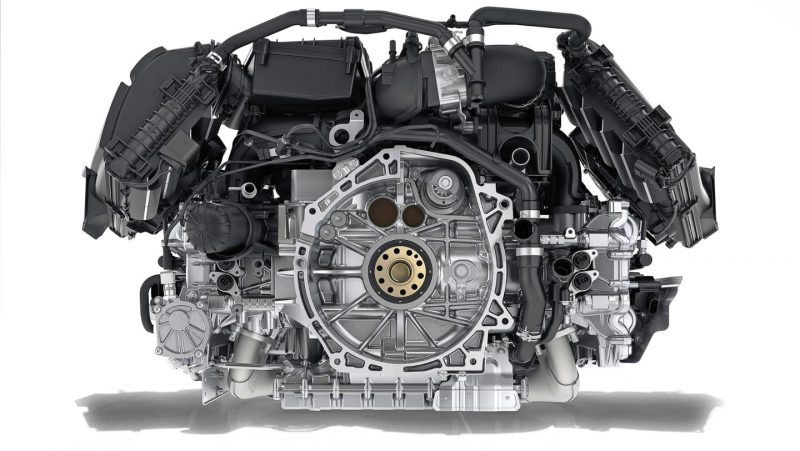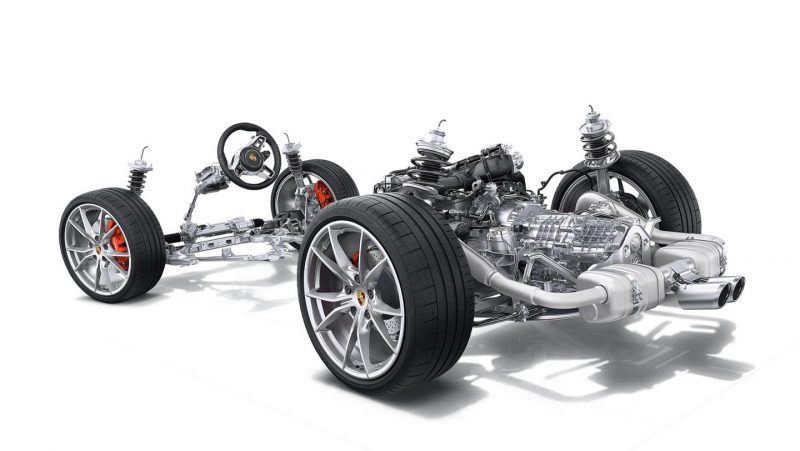Very few manufacturers have as distinctive a soundtrack as Porsche. Porsche’s flagship models have been powered by horizontally opposed engines since the 356. Because of this layout Porsches have a sound distinct from high-strung Italian sports cars or bass-heavy American V8s. The new 718 Boxster is powered by a turbocharged four rather than a six, and engineers now have to look ever more closely at what makes a Porsche sound like a Porsche.

Dr. Bernhard Pfäfflin with Bernd Müller
“The car has to sound like its output.”
Dr. Bernhard Pfäfflin is the head of development for vibrational technology and acoustics, and along with Bernd Müller is responsible for the sound of new Porsches. Porsche’s stringent requirements mean that their cars need to work in a wide variety of situations. A Porsche needs to be as competent in traffic as it is on a racetrack. Pfäfflin and Müller need to construct an appealing pallette of sounds for this wide variety of driving environments without resorting to digital tricks.

The digital sound profile for the 718 Boxster
Pfäfflin emphasizes that wile the sounds are initially developed digitally, it’s important for a Porsche to sound like a natural instrument. Early in the powertrain design process Müller tests combinations of exhaust components on the compputer. Their testing gives each engine and exhaust type unique sounds. While the number of cylinders drives the underlying sound, the length of the exhaust and placement of the tips serve to fine-tune the exhaust note. Using a digital process saves time when a new powertrain is finally ready for physical testing on a dynamometer.
The Challenges of Turbocharging

The 911 Carrera’s Flat Six
According to Müller the sound of a new car or powertrain is debated as intensely as the design of the car itself. Porsche was a pioneer in turbocharging forty years ago with the 930, but now even the base Carrera carries a turbocharged engine. Said turbochargers add another layer to the sound equation. The same high whine of a 200,000 RPM turbocharger that can alert drivers to a car coming on boost introduces new challenges to the sound engineer. Specifically, the added torque and power bring the potential for a droning whine at highway speeds. It’s the work of people like Pfäfflin and Müller to avoid this.
Four Cylinder Sounds

The 718 Boxster’s Turbocharged Four
Porsche hasn’t produced a four-cylinder car since the 968 left production in the 1990s and the brand’s last flat-four was the 912e of the 1970s. Some of today’s buyers feel the sound from the turbo charged four cylinder is not “Prosche” enough, despite the brand’s rich history with the layout. To refine the new four’s inherently rough sound, Porsche employed unequal length exhaust headers. With those, in conjunction with an asymmetrical muffler and resonator, Porsche is able to create a more refined sound from the new flat-four engine.
The Electric Future

The powertrain of the 718 Boxster
The development team is emphatic that their cars should have a natural sound, even while moving toward an electrically-driven future. Porsche treats its cars and their sounds as sacrosanct, even as other brands (such as Renault) allow customers to alter their cars’ sounds digitally. “Customers will not be able to download new sounds for electric Porsches like ringtones for their smartphones,” says Pfäfflin. Though noise levels will be lower, Porsche will need to use all of the technology at their disposal to create new and compelling sounds for electric models.
A History of Raucous Sounds
While the wail of a flat-six has long been the iconic sound we associate with Porsche, changing regulations will mean adjusting to new sounds from our beloved brand. Perhaps reflecting on some of the brand’s past successes with other layouts will help to usher in a new era of four-cylinder and electric Porsches. Above is a 944 S2 at the Targa Tasmania. What are your favorite classic four and eight cylinder Porsche sounds? Let us know in the comments below!
